What is robotic assisted surgery?
Robot assisted surgery, or robotic surgery, allows A/Prof Pilgrim to perform various complex procedures using the da Vinci Xi surgical system. The surgical system includes a camera, mechanical arms with surgical instruments, and is operated by A/Prof Pilgrim at a separate console that provides a high-definition, magnified, 3-D view of the surgery site. This world leading robotic surgery system translates A/Prof Pilgrim’s hand movements in real time, but with a greater range of motion, making it possible for him to operate through a few small incisions with increased dexterity and precision than at standard keyhole surgery.
A/Prof Pilgrim was the first to perform robotic pancreatic surgery in Victoria in 2015 and the first to perform robotic liver surgery in Victoria in 2016. Since then, he was the first surgeon at Cabrini performing robotic hernia surgery for groin and incisional hernia repair. A/Prof Pilgrim also offers robotic bariatric surgery for weight loss and continues to be at the forefront of robotic enhanced surgery to allow patients to benefit from this revolutionary technology.
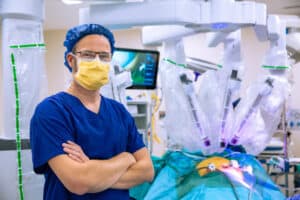
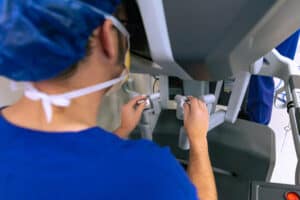
da Vinci Xi Surgical System
In 2000, the da Vinci Surgery System broke new ground by becoming the first robotic surgery system approved by the FDA for general laparoscopic surgery. This was the first time the FDA approved an all-encompassing system of surgical instruments and camera/scopic utensils.
Benefits of Robotic Assisted Surgery
- Few complications (infection)
- Less pain
- Quicker recovery times (less time spent in the hospital)
- Smaller, less noticeable scars
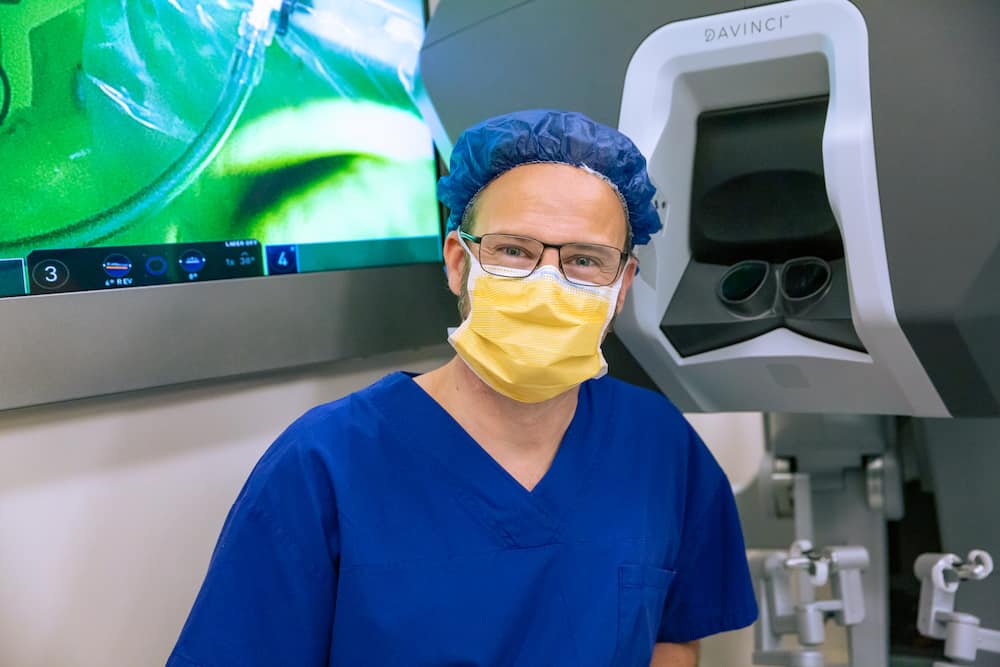
SureForm is a new breed of stapling technology; at its core is SmartFire technology, which monitors tissue compression before and during firing, making automatic adjustments to optimize the staple line. A 120° cone of articulation gives your surgeon the freedom to approach tissue where it naturally lies, potentially reducing the need to manoeuvre tissue during your procedure1.
Allowing for 1,000+ measurements per second, SmartFire makes automatic adjustments to the activation process as the transection is being made to help optimize a consistent staple line and prevent tissue damage across a range of tissue thicknesses1.
1https://www.intuitive.com/en-us/products-and-services/da-vinci/stapling/sureform
Robotic surgery has many advantages over traditional keyhole laparoscopic surgery. The visibility of the operation I have as the surgeon in the robotic console is truly in 3D because the camera actually has two cameras built in – one for each of my eyes delivering genuine 3D images. The computer interface between my hands and fingers and the instruments also means I am able to ‘scale’ my movements, meaning a larger movement of my hands on the outside can be translated into smaller precise movements of the robot on the inside through small incisions. The robot allows me to ‘clutch’ the instruments, holding the tissues and instruments exactly in place while I return my hands to their optimal working zone without losing grip of whatever I may be holding at the time.
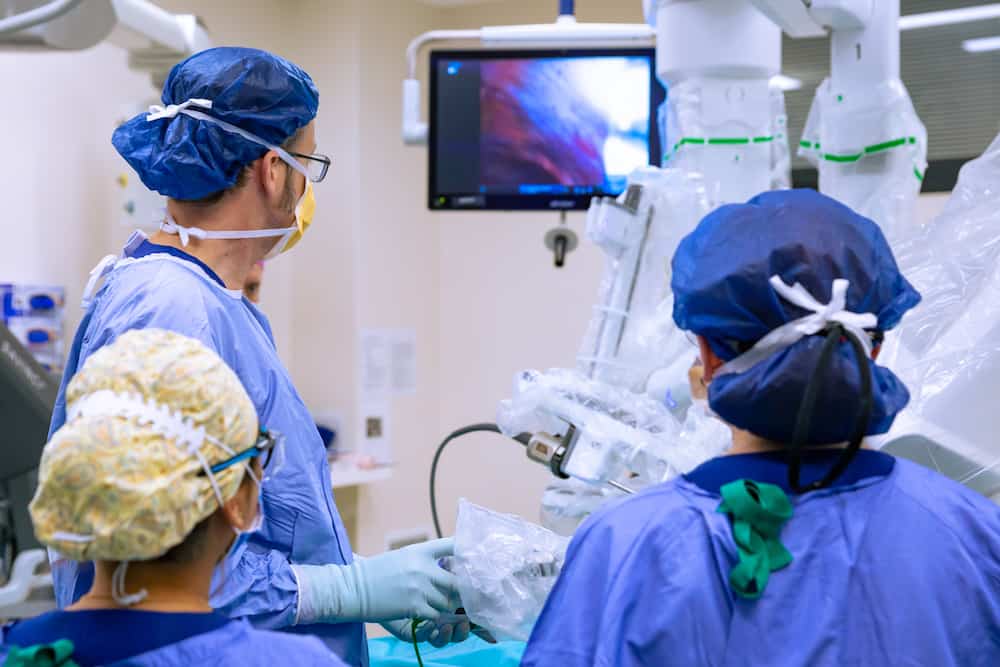
Ultimately, all of these features make robotic surgery easier and more efficient. I’m able to perform more complex surgical tasks with minimal difficulty, even performing surgery that otherwise would be too technically challenging with traditional keyhole approaches. Robotic technology continues to evolve and is clearly the way of the future. I’m proud to be involved as an early adopter of this revolutionary approach and to be able to offer the benefits of robotic surgery to suitable patients whenever it is appropriate.
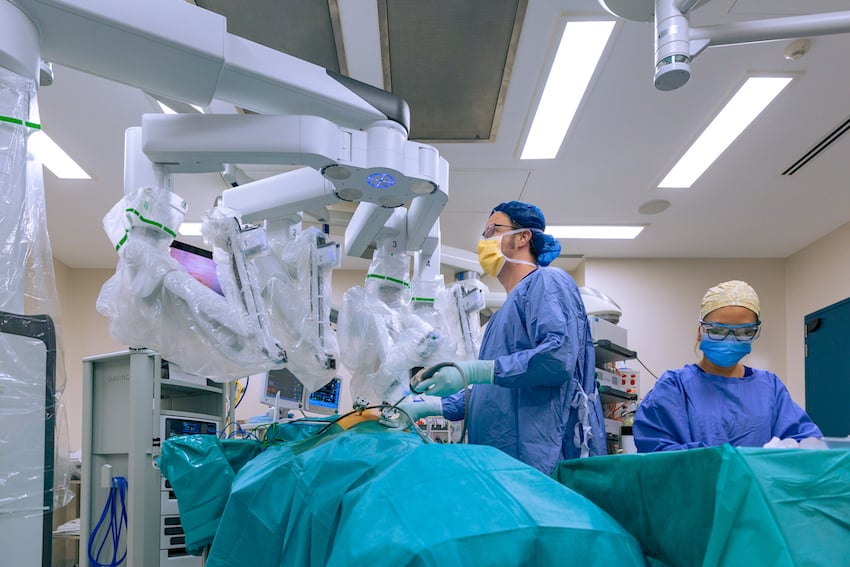
If you would like to know more about robotic assisted surgery options, you can book an appointment online now or call our practice on (03) 9509 4811 to book an appointment.
